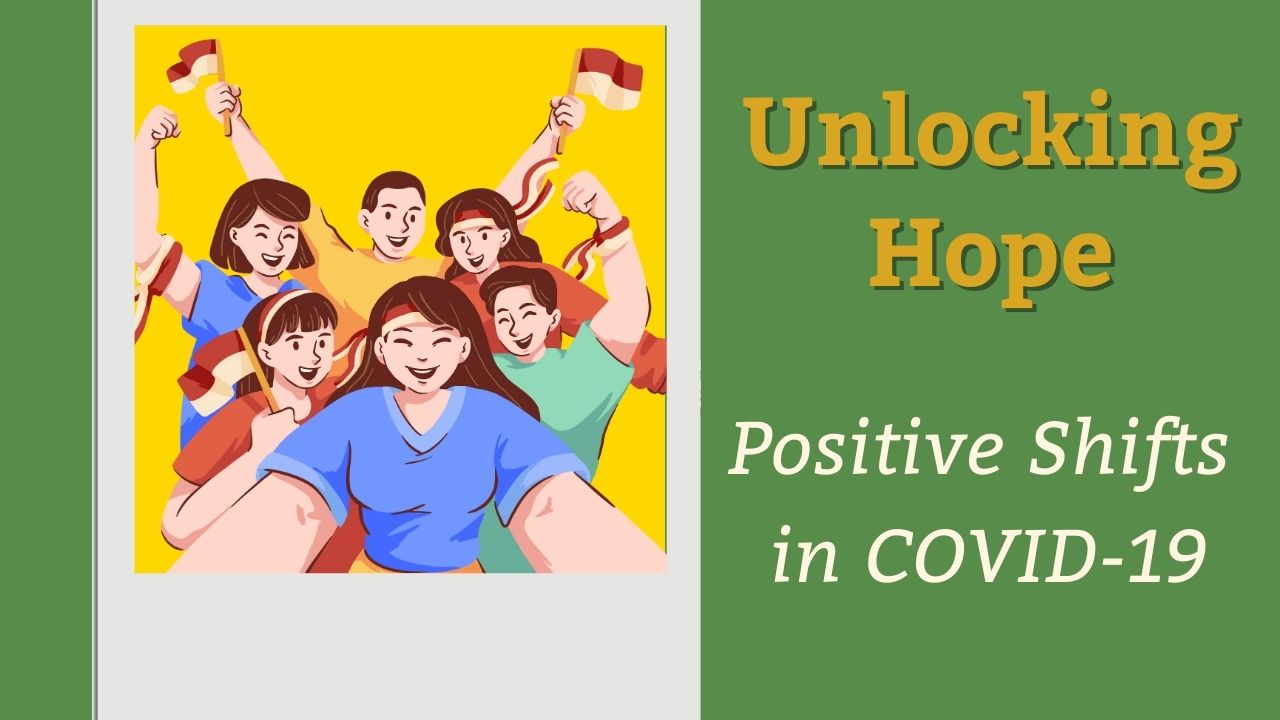It’s been four years since COVID-19 first entered our daily lives. Since then, many of us have learned more than we wanted to about immune systems, pandemics, and mass misinformation campaigns. Individuals who were considered trusted and reputable were not. Individuals who were censored and attacked by the government, medical, and social media companies, it turns out, were telling the truth.
So, what is going on right now with COVID-19?
Looking at the Good Things First
I’ve got some uplifting news to share amidst all the chaos. As of March 2024, the rate of individuals testing positive for COVID has dropped significantly to just 4%. That’s a remarkable decrease from the 7-11% range we had been seeing.
Even better, hospitalizations have plummeted from 35,000 in January 2024 to a mere 9,000 by the end of March. And here’s something personally reassuring: I’ve noticed a stark decline in sick patients visiting the clinic over the past two weeks.
It’s encouraging to see these positive trends, signaling a potential turning point in our battle against the pandemic.
Strange Correlation Between Reduced Mutations and Reduced Booster – Is it Causation?
Alright, so what’s behind this sudden turnaround? Well, brace yourselves, because it seems like we’re finally catching a break from that relentless cycle of COVID mutations that’s been driving us nuts since 2021.
I’ve been delving into the nitty-gritty of the science behind these mutations at HealthHUB. According to the experts, it’s the jabs and monoclonal antibody treatments that are throwing the virus off its game. Science always had a hunch that vaccinating during a pandemic could backfire by pressuring the virus to evolve.
Now, here’s where things get interesting. Last year, way fewer folks opted for booster shots. In the U.S., only a meager 17% went for the 2023 update, compared to the 34% who got the updated bivalent booster in 2022.
But was that tiny subset of the population enough to take the heat off the virus? It seems like it just might have been. Let’s crunch some numbers to see the scale of this drop in vaccinations.
 In October 2022, the world was guzzling down roughly 4 million COVID-19 shots a day. Fast forward to October 2023, and that number plummeted to a mere 250 thousand – just 6% of what it was a year prior. And by December 2023, we were barely even hitting 6 thousand shots a day.
In October 2022, the world was guzzling down roughly 4 million COVID-19 shots a day. Fast forward to October 2023, and that number plummeted to a mere 250 thousand – just 6% of what it was a year prior. And by December 2023, we were barely even hitting 6 thousand shots a day.
Now, here’s the kicker: this steep decline in vaccination rates aligns perfectly with the nosedive in COVID-19 mutations and infections. Some might say ‘correlation doesn’t mean causation,’ but when science has been warning us all along that ‘life will find a way,’ maybe it’s time we start paying closer attention. After all, it seems like our decision to ease off the vaccine pedal might just be paying off in ways we hadn’t anticipated.
Do the mRNA Shots Shed?
Before this year, we were constantly exposed to; mutations of this virus, the jab nanoparticles, or the vaccine-created spike protein. Until this year, the wastewater levels of COVID-19 have never really gone down. This is the first time I’ve checked out the wastewater statistics on COVID-19 and found most of the country showing low levels of COVID-19 in the wastewater.
I think about that because up until this year, the unvaccinated were chronically exposed to jab created nanoparticles and spike proteins. I know, you’ve read the the social media fact checkers. They have been labeling information on mRNA vaccine shedding as “misleading” because the CDC definition of vaccine shedding is a vaccine created from a live virus.
First off, we don’t make many live virus vaccines today because they can be problematic. So, maybe the definition needs to be changed or a new definition identified. Second, I hate it when someone tries to outsmart and mislead the population through processes and definitions because they don’t want to address the issue.
The mRNA shots don’t fit into the definition of vaccines, either, as they are not created from a virus. These shots modify our mRNA and use this modification to create products our body would not otherwise produce, aligning these shots with gene therapy.
In 2015, the FDA identified shedding as a risk of all gene therapy medications and developed guidance on testing for shedding in new products. The industry guidance paper is called “Design and Analysis of Shedding Studies for Virus or Bacteria-Based Gene Therapy and Oncolytic Products.”
Here is the kicker, the FDA indicates the COVID shots are not gene therapy because the FDA has labeled them as vaccines and not gene therapy. Because the FDA has used a different label for these shots, the guidance doesn’t apply.
So, the issue isn’t if these shots shed. There is enough evidence they do, and if you are sensitive, before this year, even going into a grocery store could be problematic.
The issue is that, like PFOA or oxycodone/oxytocin, the FDA has a history of being wrong and, due to its size, has required the corporations requesting the approval to create the studies, document and monitor the results, determine which statistics to use, and decide the definitions. That’s like you requesting a loan, determining what information needs to be on your application, auditing your application, and sending the approval to the FDA to rubber stamp.
After approval, getting change takes much more than science; it takes thousands of deaths, thousands of illnesses, and decades of lawsuits from multiple different groups.
Shedding is important as it may play a pivotal role in the most significant changes I’ve seen in the clinic and in the environment.
What Has Changed in Our Immune System?
 It’s still hard to put things together today because of the lack of research or conversation in the United States. We have all this science that government agencies, corporations, and social media giants cherry-pick through trying to discredit what is inconvenient. Their actions hinder progress forward in helping individuals suffering from long COVID or vax injury.
It’s still hard to put things together today because of the lack of research or conversation in the United States. We have all this science that government agencies, corporations, and social media giants cherry-pick through trying to discredit what is inconvenient. Their actions hinder progress forward in helping individuals suffering from long COVID or vax injury.
It’s even scarier because it feels like our Western doctors are just as confused as the population. They seem to be grasping at straws just as distressed at their lack of effectiveness.
The pandemic may have changed our health and immune system in ways our current medical system is not set up to address. Three things have changed our health: spike protein, micro bacteria, and nanoparticles.
Our current Western medical system is primarily geared towards tackling larger threats like bacteria. They often struggle to address smaller-scale issues. A virus is 1,000 times smaller than a bacteria, and a nanoparticle is 1,000 times smaller than a virus. Western medicine is ineffective at treating viruses.
If Western Medicine has limited resources to address viruses, it has nothing to address nanoparticles. Even if our current medical system could address nanoparticles, their size implies that they operate under different physical laws than larger particles.
What is the Significant Change in 2024
Starting in January 2024, things started changing in the clinic. The non-vaccinated started showing up in the clinic with symptoms similar to what the vaccinated had been showing over the last two years. One hypothesis could be that three years of exposure to shedding exposed the unvaccinated to enough particles to begin showing symptoms.
So, January 2024 is when I first started seeing the new change. The unvaccinated showed up with the exact same symptoms as the vaccinated had over two years ago. The big difference is the treatment of the unvaccinated has followed a different path than I had developed for the vaccinated. Their symptoms took different paths to achieve the same results, requiring different treatments. Each individual required a different treatment.
What About High Blood Pressure?
I’ve had several patients who were at their Western Doctor with blood pressure 180/100 or higher with rapid heart rate, and not put on beta-blockers. One of my clients was asked to come back in two weeks.
Western Medicine has been using a lot of beta-blockers these last few years as the pandemic changed what high blood pressure looked like. High blood pressure with tachycardia (rapid heartbeat) used to be a disease of the old. It was treated with a beta-blocker. But, beta-blockers are toxic, and using them on a much younger generation could have significant ramifications.
I started hearing stories of patients on propanolol, a beta-blocker for high blood pressure, crashing. Propanolol was the common beta-blocker prescribed post-COVID for high blood pressure with a rapid heart rate – the hallmark of post-COVID high blood pressure.
The guideline for taking beta-blockers is three years. Recently, I started hearing about blood pressure crashing. That means the blood pressure would suddenly drop to life threatening levels. I also started seeing it in the clinic with some of my clients on propranolol.
The theory could be beta-blocker poisoning, which is a side effect of using too much of this medication. However, the cause of the high blood pressure may require a different treatment that could bypass the beta-blockers.
 Several medical professionals have hypothesized that some of the symptoms may be due to micro-clotting and the long-term damage micro-clotting can cause to the vasculature and the muscles of the heart and lungs.
Several medical professionals have hypothesized that some of the symptoms may be due to micro-clotting and the long-term damage micro-clotting can cause to the vasculature and the muscles of the heart and lungs.
I talk about micro-clotting in HealthHUB and how East Asian Medicine treats micro-clotting in HealthHUB in the investigative report, “Turning it Around – Post Exercise Fatigue”.
What Does It Come Down To?
It all comes down to the fact that we have some great news on the COVID front. There has been a lack of mutations this year, which correlates to the significant reduction in vaccine booster uptake in 2023. The COVID levels in wastewater and the number of individuals testing positive for COVID are the lowest since the start of tracking.
Then we have some not-so-great news. I’m seeing more unvaccinated people in the clinic. Sometimes, similar symptoms require the same treatments, which is the cornerstone of Western medicine. In this situation, each individual requires a unique treatment.

